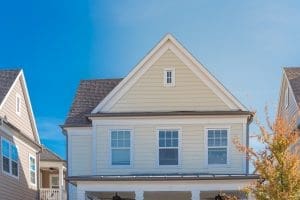What Makes a Window Energy Efficient?

Picture this: It’s the end of the month, and you’re walking back from the mailbox, bills in hand. You tear open the electric bill and almost drop the envelope to the ground from shock at the number displayed in red. It seems like your energy bill gets inexplicably higher and higher every month, and you’re starting to grow frustrated.
Sound familiar? If so, you’re not alone. Homeowners across the country deal with exorbitant electricity bills each month due to their homes’ poor thermal efficiency. Here’s the good thing, though: You don’t have to be among them.
Your home windows could be to blame for high utility costs. If they’re old and worn-out, they’re probably not very energy efficient anymore. And that means it’s time for a replacement. Keep your eye out for the top three things that make a window energy efficient:
Frame and Sash Material
There are a number of frame and sash materials out there; wood, vinyl, and aluminum are among the most popular. Wood frames, while beautiful, expand and contract easily due to weather, allowing for thermal transfer—exactly what you don’t want. Vinyl has better insulating properties than wood, but it tends to be less durable than other window materials—and you want your investment to last. And metal, aluminum frames conduct heat and cold, making them one of the least energy-efficient options out there.
For the most insulating window frame material, look to a composite material, like Fibrex® from Renewal by Andersen®. Our proprietary window frame material boasts superior insulating properties you can rely on to lower your monthly energy bill.
Type of Glass
Gone are the days when single-pane windows were the standard in replacement windows. Today, most windows come with at least dual panes for optimal energy efficiency. But perhaps what matters even more than the number of panes in the window is the type of glass those panes are made from. Low-E glass—a type of glass invented to reduce the amount of UV light that comes through—is essential to look out for in your replacement windows.
Why stop there, though? At Renewal by Andersen®, we took things a step further. Our High Performance™ Low-E4® glass is even more thermally efficient than regular Low-E glass, all but eliminating UV rays which can heat up your home. In fact, our High Performance™ Low-E4® glass touts more than double the energy efficiency of standard dual-pane glass.
ENERGY STAR® Certification
Perhaps the easiest way to choose the most energy-efficient replacement windows for your home is to look for the ENERGY STAR® seal of approval. ENERGY STAR® is the government-backed symbol representing the best products in energy efficiency as determined by the Environmental Protection Agency (EPA). To meet ENERGY STAR® certification standards, replacement windows must meet a set of strict energy efficiency guidelines set by the EPA and be independently tested, certified, and verified by the National Fenestration Rating Council (NFRC).
While many window companies meet the minimum requirement to have their products ENERGY STAR® certified, Renewal by Andersen® goes above and beyond. We maintain a deep commitment to crafting some of the most energy-efficient products on the market. Why? Because we care not only about saving our customers money on their energy bills but also about making the planet healthier, one window at a time. Thanks to this commitment, we’re proud to state that we earned the 2019 ENERGY STAR® Partner of the Year award for Sustained Excellence.
Energy-Efficient Replacement Windows for Your Wisconsin Home
Ready to see savings on your next energy bill? Let’s replace the old, worn-out windows in your Wisconsin home with top-tier, energy-efficient windows. Contact RBA of Greater Wisconsin today to learn more.














